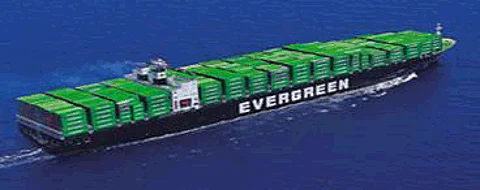

Container carriers are not doing enough to combat the global recession, according to a special report published this week by Drewry Shipping Consultants.
The London-based shipping consultancy's new report "Capacity Management: surviving the container crisis" concludes that carriers need to act now and decisively.
While the past six months have seen a huge amount of capacity changes in the industry, freight rates continue to plummet and Drewry says that the industry is shirking the painful decisions that are needed to ensure its collective survival.
Drewry's new in-depth report analyses how carriers have reacted to the global economic crisis and suggests some steps to be taken to ensure a carrier's survival.
"So far they have been altering capacity via service suspensions, slow steaming, service deviations and lay-ups. While some of these strategies are more effective than others, few if any carriers have yet adopted the full suite of measures consistently and there is still a reluctance on a collective front to tackle the dire situation head-on," said a statement issued by Drewry. "We still expect some major operators to fail this year."
The consultancy argued that the operators who move the fastest and are the most radical in their strategies will be best placed for recovery in the long term.
"Without a doubt, scrapping and wholesale cancellation of the container orderbook are the two most effective tools of capacity management. While scrapping has increased significantly since the fourth quarter of 2008, it will not alter the fleet enough to make a real difference and carriers will not start sending ships younger than 20 years to the scrap yards.
"Unlike in the bulk sector, cancellations of container ships have been very scarce indeed and for the moment at least carriers seem reluctant to forfeit large initial downpayments on their orders made in 2007 and yards are definitely playing hardball."
According to Drewry, over 50 main services have been suspended from the core east-west trades since October 2008, but while the end result has led to a net 20-25 percent reduction in overall capacity on the Asia to Europe and Mediterranean routes, relatively few vessels have been laid up. Furthermore, this has not arrested the very sharp decline in freight rates.
Surprisingly low lay-up figures
Drewry's analysis of the core east-west routes identified a total of 48 vessels (249,000TEU) or approximately 3.5 percent total available capacity (two percent of global capacity) that has been laid up, mainly in Asian ports. Many vessels have simply been cascaded elsewhere and in a number of cases two services have been amalgamated into one with resultant tonnage.
"This suggests that carriers are still reluctant to lay vessels up despite the desperate trading conditions and that other means of capacity management, though less radical, are more prevalent.
So far, no carrier has been bold enough to mothball a newbuild over 10,000TEU. The emphasis has been on tonnage below 2,000TEU and in returning chartered vessels to owners where contracts have expired. Drewry said that these are the easier options for carriers to consider as the costs of preparing a vessel for lay-up and then reactivating it are likely to be well over US$1 million for a post-Panamax containership.
Adjusting to the new economics
Neil Dekker, Editor of the Drewry report warned that carriers would have to "swallow some very unpalatable truths as the global recession subverts conventional wisdom".
"The degree to which they have signed up to the cost-cutting agenda has been rather patchy," Mr Dekker said. "While slow steaming has become widely adopted on the Asia-north Europe/Mediterranean trades, several services have remained unchanged even as fuel prices rose to over US$700/tonne and then came back down towards US$200/tonne.
"Even at the current fuel price of around US$270/tonne, it costs almost US$350,000 more to make an Asia-north Europe round voyage on a 56-day rotation than on a 70-day schedule (10 ships). That's over US$17 million a year.
"It is not at all clear that carriers ever fully priced their services to cover the costs of fast transits, but in the present market conditions it is certain that shippers and importers will not pay for speed. Carriers can hardly afford to allow this if they are to continue as viable companies in their present form."
Similarly inconsistent strategy characterises the diversion of services to avoid the Suez or Panama Canals. This has been adopted by only a few carriers, on only a small number of strings, and only on the backhaul leg, so that a single carrier or group can be operating both high- and low-cost services alongside each other.
The collapse of both demand and freight rates has put most trades into big loss-making territory and, in extreme cases, has meant that much of the cargo has been making a negative contribution to fixed service costs.
According to Drewry, carriers are still desperate to hold on to hard won market share, even when every extra container carried worsens the profit and loss account.
"With inherent over-capacity and a sharp fall in vessel charter rates, carriers are also having to re-evaluate the worth of their assets when weighing ship time against cash savings and against fuel expenses," explained Drewry.
"It seems as though ship time has been almost completely discounted by carriers in arriving at the decision to bypass the Suez Canal – a move that seems to be driven by cash-flow considerations. For the deviation to make sense from an accounting point of view, the carriers must be valuing their ships at near to zero. In today's market, that might not be far from reality."
